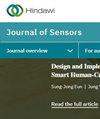Efficacy of Multiseason Sentinel-2 Imagery for Classifying and Mapping Grassland Condition
IF 1.1
4区 工程技术
Q3 ENGINEERING, ELECTRICAL & ELECTRONIC
引用次数: 0
Abstract
Assessing the condition of ecosystems is imperative for understanding their degree of degradation and managing their conservation. The increasing availability of remote sensing products offers unprecedented opportunities for mapping vegetation with high detail and accuracy. However, mapping complex ecosystems, like grasslands, remains challenging due to their heterogeneity in vegetation composition and structure. Furthermore, degraded ecosystems affected by invasive vegetation present different condition levels within vegetation classes, limiting the accuracy of classifications and condition assessment. Here, we evaluated the capacity of Sentinel-2 multispectral time series imagery as an input for classifying different levels of cover within a vegetation class to detect the subtle differences needed to assess the condition of degraded ecosystems. Our study was conducted in the iron-grasslands of South Australia, a perennial tussock grassland dominated by iron-grasses (Lomandra spp.) and severely affected by invasive annual grasses. We developed random forest models to discriminate classes defined by the cover of iron-grasses, wild oats (Avena barbata), and woodland (training points = 250). We tested the importance of data seasonality, spatial resolution, spectral bands, and vegetation indices. The combination of spatial, temporal, and spectral detail produced the best classification results. Random forest classifications performed best at 10 m resolution, suggesting that detailed resolution outweighs spectral detail for discriminating vegetation patterns in systems with high spatial heterogeneity. The model at 10 m resolution combining all periods and all variables (spectral bands and vegetation indices) produced a mean kappa coefficient of 56% and a mean overall accuracy of 67%. The dry season imagery and vegetation indices emerged as the most informative, suggesting that vegetation classes presented different phenological properties critical for their discrimination. Our study contributes to mapping complex ecosystems, facilitating the discrimination of different levels of condition in grasslands degraded by invasive species, and thus benefits the conservation of native grasslands and other ecosystems.多季节哨兵-2 图像在草地状况分类和绘图方面的功效
要了解生态系统的退化程度并对其进行保护管理,就必须对其状况进行评估。越来越多的遥感产品为绘制高精细、高精度的植被图提供了前所未有的机会。然而,由于植被组成和结构的异质性,绘制草原等复杂生态系统的地图仍具有挑战性。此外,受入侵植被影响的退化生态系统在植被等级中呈现出不同的状况水平,限制了分类和状况评估的准确性。在此,我们评估了哨兵-2 多光谱时间序列图像作为植被等级内不同覆盖水平分类输入的能力,以检测评估退化生态系统状况所需的细微差别。我们的研究是在南澳大利亚的铁草地进行的,这是一片以铁草(罗曼德拉属)为主的多年生草丛草原,受到入侵的一年生草丛的严重影响。我们建立了随机森林模型,以区分由铁草、野燕麦(Avena barbata)和林地覆盖率定义的类别(训练点 = 250)。我们测试了数据季节性、空间分辨率、光谱带和植被指数的重要性。空间、时间和光谱细节的组合产生了最佳的分类结果。随机森林分类法在 10 米分辨率下表现最佳,这表明在具有高度空间异质性的系统中,详细分辨率比光谱细节更能区分植被模式。分辨率为 10 米的模型结合了所有时期和所有变量(光谱波段和植被指数),平均卡帕系数为 56%,平均总体准确率为 67%。旱季图像和植被指数的信息量最大,表明植被类别具有不同的物候特性,这对它们的区分至关重要。我们的研究有助于绘制复杂的生态系统图,便于区分因入侵物种而退化的草地的不同状况,从而有利于本土草地和其他生态系统的保护。
本文章由计算机程序翻译,如有差异,请以英文原文为准。
求助全文
约1分钟内获得全文
求助全文
来源期刊

Journal of Sensors
ENGINEERING, ELECTRICAL & ELECTRONIC-INSTRUMENTS & INSTRUMENTATION
CiteScore
4.10
自引率
5.30%
发文量
833
审稿时长
18 weeks
期刊介绍:
Journal of Sensors publishes papers related to all aspects of sensors, from their theory and design, to the applications of complete sensing devices. All classes of sensor are covered, including acoustic, biological, chemical, electronic, electromagnetic (including optical), mechanical, proximity, and thermal. Submissions relating to wearable, implantable, and remote sensing devices are encouraged.
Envisaged applications include, but are not limited to:
-Medical, healthcare, and lifestyle monitoring
-Environmental and atmospheric monitoring
-Sensing for engineering, manufacturing and processing industries
-Transportation, navigation, and geolocation
-Vision, perception, and sensing for robots and UAVs
The journal welcomes articles that, as well as the sensor technology itself, consider the practical aspects of modern sensor implementation, such as networking, communications, signal processing, and data management.
As well as original research, the Journal of Sensors also publishes focused review articles that examine the state of the art, identify emerging trends, and suggest future directions for developing fields.
 求助内容:
求助内容: 应助结果提醒方式:
应助结果提醒方式:


